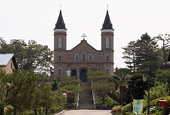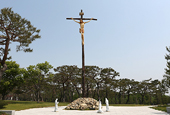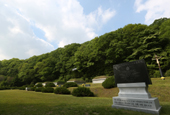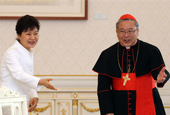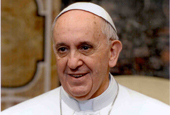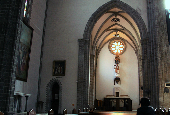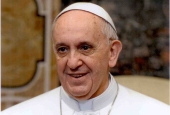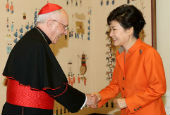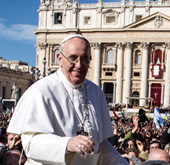The Sinri St. Daveluy Historic Site in Dangjin, Chungcheongnam-do (South Chungcheong Province), used to be home to the largest Catholic community in 1860s Joseon Korea, so much so that it was referred to as the gyouchon, or, "Catholic village." Lee Jonchang Louis de Gonzague, a self-appointed priest in the 19th century, spread the gospel to residents of the area. When Father Martin Luc Huin arrived in Joseon in 1865, he wrote that all 400 residents of Sinri were already Catholic.
Land reclamation projects that have been continuing in the area for many centuries have created many pieces of farmland to where people can relocate and set up new villages. Sinri, literally meaning, "the smallest administrative unit," was one of such villages. Missionaries also secretly entered Joseon through Sinri at that time. Because Sinri was such a crucial place for the evangelization of Catholicism in Korea, it was once called the "Catacombs of Joseon," as it was compared to the human-made subterranean passageways created for religious practice in Rome. Father Felix Clair Ridel actually wrote in a letter at the time that, "Now we live in an era of the Catacombs of Joseon."
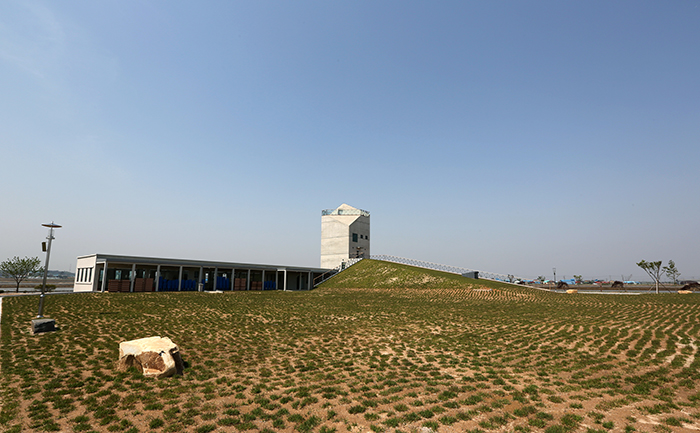
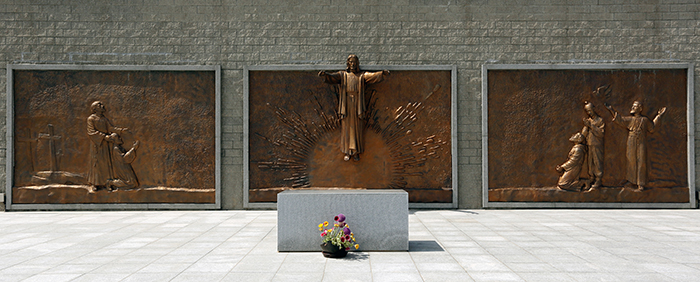
However, Catholicism in the area was completely wiped out in the persecutions of 1866. According to church records, there were as many as 42 people who died as martyrs, including Father Martin Luc Huin. That number only includes those who could be identified. This is the biggest number of martyrs from a single village in Korea. The area used to be a single-clan village of the Son family, but the whole clan was persecuted. Now, there is no one in the village anymore whose family name is Son. All that remains are tombs of unidentified martyrs, some from the Son clan and some who were killed in the nearby Haemi village, near the scared town site.
The Sinri St. Daveluy Historic Site, built in the middle of a farming village, includes the house and birthplace of St. Thomas Son Ja-seon. There is also a statue and a memorial to St. Marie Nicolas Antoine Daveluy. St. Daveluy, the fifth bishop of Joseon, resided in the house of St. Thomas Son Ja-seon, which was restored in 2004.
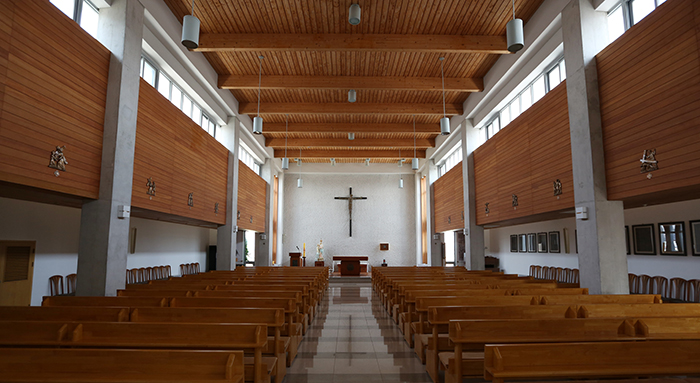

St. Daveluy performed his pastoral ministry in Joseon for 21 years, starting in October 1845 when he arrived in Ganggyeong, Chungcheongnam-do, with St. Andrew Kim Dae-geon. He acted as the fifth bishop of Joseon until 1886 when he was arrested during another great persecution. He played a pivotal role among missionaries across the country while preaching the Gospel.
St. Daveluy wrote Catholic books and translated foreign books into Korean. He also collected documents on the history of the Joseon Catholic Church and information about Korean martyrs. He sent much of his collected works to the Paris Foreign Mission Society. His collections later helped Claude-Charles Dallet write "The History of the Korean Catholic Church" (Histoire de l’Eglise de Coree, 1874) and played a decisive role in the canonization of 103 Korean saints. His letters to his family in France are also considered important historical records of the Catholic church.
St. Daveluy sent a letter to Father Andre Jangard in Henan Province, China, in July 1858.
"We must have been protected by the God and the Virgin Mary here. There might have been a nationwide persecution because two of our followers were arrested, but it didn't happen. Someone seems to have accused us before a high government official, but luckily, nothing happened. The power of the government official was insignificant compared to that of the Virgin Mary who prevented him from violating us. How grateful!" he wrote in the letter.
Ahead of Pope Francis' visit to Korea in August, a memorial dedicated to St. Daveluy was completed on May 6 this year. The memorial, built of exposed mass concrete, has an observation tower from where people can see all of Naepo, including the Hapdeok Catholic Church and the Yeosaul Church. The memorial has twelve paintings outlining the history of Catholicism in the area and other assorted artifacts. In the sacred place's park, there is an outdoor oratory dedicated to the martyrs, including Father Pierre Aumaitre who was arrested in Sinri. Three bells produced by a French bell master have also been installed.
"Before the Sapgyocheon Stream was blocked, boats sailed up the stream and almost reached the Sinri sacred place," said Rec. Peter Kim Dong-Kyum. "Siri, located in the middle of a vast plain, used to be a refuge for Catholics until the persecution of 1866. It was far from any administrative area to which it belonged and administrative power did not reach this far."
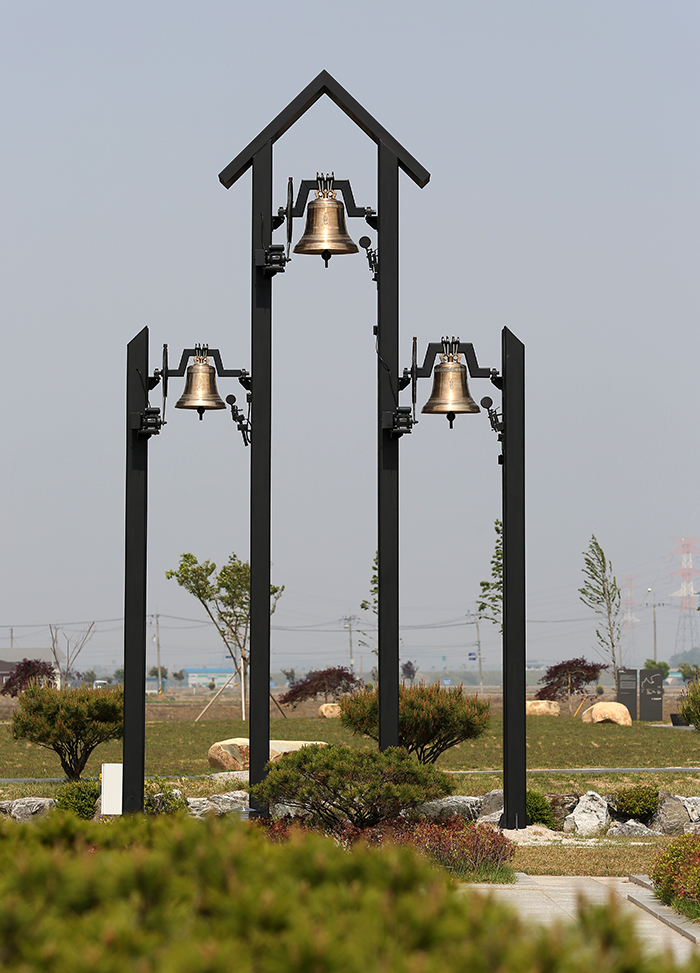
For more information, please visit the Sinri St. Daveluy Historic Site's website (www.sinri.or.kr) or call 041-363-1359.
By Limb Jae-un
Korea.net Staff Writer
jun2@korea.kr
http://www.korea.net/koreanet/newsView/daum?articleId=119779
Land reclamation projects that have been continuing in the area for many centuries have created many pieces of farmland to where people can relocate and set up new villages. Sinri, literally meaning, "the smallest administrative unit," was one of such villages. Missionaries also secretly entered Joseon through Sinri at that time. Because Sinri was such a crucial place for the evangelization of Catholicism in Korea, it was once called the "Catacombs of Joseon," as it was compared to the human-made subterranean passageways created for religious practice in Rome. Father Felix Clair Ridel actually wrote in a letter at the time that, "Now we live in an era of the Catacombs of Joseon."


The Sinri St. Daveluy Historic Site used to be home to the biggest Catholic community in Joseon and was once called gyouchon, or "Catholic village." (photos: Jeon Han)
However, Catholicism in the area was completely wiped out in the persecutions of 1866. According to church records, there were as many as 42 people who died as martyrs, including Father Martin Luc Huin. That number only includes those who could be identified. This is the biggest number of martyrs from a single village in Korea. The area used to be a single-clan village of the Son family, but the whole clan was persecuted. Now, there is no one in the village anymore whose family name is Son. All that remains are tombs of unidentified martyrs, some from the Son clan and some who were killed in the nearby Haemi village, near the scared town site.
The Sinri St. Daveluy Historic Site, built in the middle of a farming village, includes the house and birthplace of St. Thomas Son Ja-seon. There is also a statue and a memorial to St. Marie Nicolas Antoine Daveluy. St. Daveluy, the fifth bishop of Joseon, resided in the house of St. Thomas Son Ja-seon, which was restored in 2004.


(Top) The church at the Sinri St. Daveluy Historic Site in Dangjin, Chungcheongnam-do. (Bottom) Paintings containing the history of the spread of Catholicism in the area and the persecutions that followed, in the memorial dedicated to St. Daveluy. (photos: Jeon Han)
St. Daveluy performed his pastoral ministry in Joseon for 21 years, starting in October 1845 when he arrived in Ganggyeong, Chungcheongnam-do, with St. Andrew Kim Dae-geon. He acted as the fifth bishop of Joseon until 1886 when he was arrested during another great persecution. He played a pivotal role among missionaries across the country while preaching the Gospel.
St. Daveluy wrote Catholic books and translated foreign books into Korean. He also collected documents on the history of the Joseon Catholic Church and information about Korean martyrs. He sent much of his collected works to the Paris Foreign Mission Society. His collections later helped Claude-Charles Dallet write "The History of the Korean Catholic Church" (Histoire de l’Eglise de Coree, 1874) and played a decisive role in the canonization of 103 Korean saints. His letters to his family in France are also considered important historical records of the Catholic church.
St. Daveluy sent a letter to Father Andre Jangard in Henan Province, China, in July 1858.
"We must have been protected by the God and the Virgin Mary here. There might have been a nationwide persecution because two of our followers were arrested, but it didn't happen. Someone seems to have accused us before a high government official, but luckily, nothing happened. The power of the government official was insignificant compared to that of the Virgin Mary who prevented him from violating us. How grateful!" he wrote in the letter.
Ahead of Pope Francis' visit to Korea in August, a memorial dedicated to St. Daveluy was completed on May 6 this year. The memorial, built of exposed mass concrete, has an observation tower from where people can see all of Naepo, including the Hapdeok Catholic Church and the Yeosaul Church. The memorial has twelve paintings outlining the history of Catholicism in the area and other assorted artifacts. In the sacred place's park, there is an outdoor oratory dedicated to the martyrs, including Father Pierre Aumaitre who was arrested in Sinri. Three bells produced by a French bell master have also been installed.
"Before the Sapgyocheon Stream was blocked, boats sailed up the stream and almost reached the Sinri sacred place," said Rec. Peter Kim Dong-Kyum. "Siri, located in the middle of a vast plain, used to be a refuge for Catholics until the persecution of 1866. It was far from any administrative area to which it belonged and administrative power did not reach this far."

Three bells produced by a French bell master (photo: Jeon Han)
For more information, please visit the Sinri St. Daveluy Historic Site's website (www.sinri.or.kr) or call 041-363-1359.
By Limb Jae-un
Korea.net Staff Writer
jun2@korea.kr
http://www.korea.net/koreanet/newsView/daum?articleId=119779
